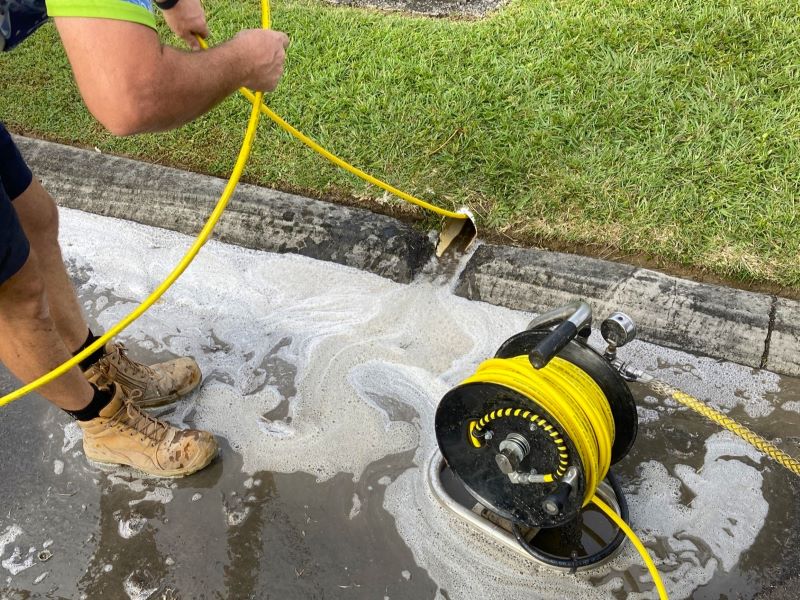Stormwater drainage systems are crucial infrastructures that encompass various components, including roof plumbing drainage, French drains, spoon drains, and strip drains. These systems are essential in preventing water damage to your property and efficiently managing stormwater runoff. Regular maintenance is vital since neglect can lead to severe issues such as drain blockages and potential flooding. Whether facing clogged grates, invasive roots in plumbing, or damaged systems, proactive maintenance significantly reduces the risk of future complications and costly repairs. Learning effective maintenance strategies is paramount for safeguarding your home against the detrimental effects of inadequate drainage.
This comprehensive guide offers valuable insights into maintaining your drainage systems effectively and provides actionable steps to take when encountering blockages.

Effective Maintenance Strategies for Traditional Stormwater Drainage Systems
Traditional stormwater drains are fundamental to most properties, designed to channel rainwater away from structures and mitigate potential flooding risks. However, over time, these systems can become obstructed by various debris, including leaves, dirt, and branches, significantly impairing their efficacy. To ensure that water flows freely and does not accumulate near your home’s foundation—which could lead to severe structural issues—regular maintenance is essential. By establishing a routine maintenance schedule, you can enhance the lifespan and efficiency of your drainage systems, particularly during heavy rainfall events.
Essential Tips for Caring for Traditional Drains:
- Regularly clear the grates and gutters: To prevent water flow obstructions, routinely remove accumulated leaves and debris, especially after storms when the buildup is most likely.
- Monitor for pooling water: Stay vigilant for signs of water backing up or pooling near your drains. These may indicate a blockage. Additionally, inspect for soggy areas in your garden, which could signal underlying drainage problems needing attention.
- Engage professional services: Schedule routine inspections and cleanings with a qualified plumber, such as Creek to Coast, to ensure your drains function optimally and help you avoid future complications.
Optimal Practices for Maintaining French Drain Systems
French drains are engineered to effectively redirect groundwater away from your home and retaining walls, establishing them as invaluable tools for moisture management. However, these underground drainage systems necessitate ongoing care to prevent blockages. Comprising gravel and a perforated pipe, French drains facilitate efficient water diversion, but they can become clogged with dirt, sediment, and even invasive root systems over time. Proper maintenance is critical to ensure their longevity and operational efficiency, thus preventing issues that could lead to costly repairs down the line.
Key Maintenance Tips for French Drains:
- Watch for slow drainage: If water isn’t draining as it should, this may indicate a clog that requires immediate attention to avoid further complications.
- Regularly flush the system: Periodic flushing with water can help clear away potential blockages before they escalate into severe problems that disrupt drainage.
- Seek professional cleaning services: If you notice sediment buildup or root intrusion, contact Creek to Coast for thorough cleaning, potentially utilizing hydro-jetting tools to effectively clear the pipes or inspection points.
Essential Maintenance Practices for Spoon Drain Systems
Spoon drains are designed with shallow, curved channels specifically to guide surface water away from driveways, patios, and other paved surfaces efficiently. While they generally require minimal upkeep, it is crucial to regularly tend to them to prevent clogging. Neglecting to clear these channels can lead to water pooling on your property, which may result in potential damage over time. By adopting simple maintenance habits, you can ensure that your spoon drains remain functional and effective in managing surface water.
Maintenance Guidelines for Spoon Drains:
- Keep the channel debris-free: Regularly sweep out leaves, dirt, and other materials to maintain smooth water flow. A high-pressure washer can be particularly effective for thorough cleaning.
- Check the slope: Ensure the slope of the spoon drain is intact and functioning as intended, as gravity plays a crucial role in directing water away efficiently.
- Inspect for damage: Regularly check the drain for cracks or breaks, as they can be compromised by vehicle traffic and may require timely repair.
- Seek professional evaluation: If you notice poor drainage, it may be time to call Creek to Coast for a professional assessment to make necessary adjustments or repairs to restore optimal function.
Essential Steps for Maintaining Linear Drain Systems
Linear drains, also known as trench drains, are strategically installed in areas like driveways and pool decks to capture surface runoff effectively. While they excel at preventing water accumulation, they can collect debris over time, necessitating regular cleaning to maintain their effectiveness. Establishing a consistent cleaning routine is vital to prevent blockages that can lead to water pooling and damage in surrounding areas, ensuring their performance and longevity.
Maintenance Tips for Linear Drains:
- Frequently clean the grates: Regularly monitor the grates for any buildup of dirt, leaves, or debris that could obstruct flow and remove these blockages as needed.
- Regularly flush the system: Running water through the drain routinely will help ensure it flows correctly and that no blockages are present.
- Consider professional maintenance: If you encounter backups or slow drainage, don’t hesitate to reach out to Creek to Coast for expert cleaning services to effectively remove deep clogs and debris.
Immediate Actions to Take When Experiencing Blocked Drains
Despite your diligent maintenance efforts, blockages can still occur in any drainage system. Signs such as water pooling, slow drainage, or overflowing grates indicate that immediate action is necessary to avert more severe complications. By understanding the common causes of blockages, you can identify the issue and take appropriate measures to resolve it effectively.
Common Causes of Blockages Include:
- Tree roots: Roots can invade underground pipes, creating significant blockages that disrupt water flow and drainage efficiency.
- Accumulated debris: Leaves, dirt, and other environmental materials can build up over time, obstructing water passage through your drainage system.
- Pipe damage: Broken or crushed pipes can severely restrict water flow, necessitating immediate professional intervention.
When faced with a blockage, it is advisable to consult a professional plumber like Creek to Coast. They utilize advanced tools, such as high-pressure water jetters and CCTV cameras, to accurately diagnose and resolve the issue. Attempting to clear a blockage on your own can exacerbate the problem, particularly if the pipes are damaged or roots have infiltrated the system.

Comprehensive Maintenance Strategies for All Types of Stormwater Drainage Systems
To ensure your stormwater management systems—whether traditional, French, spoon, or linear drains—continue to function effectively, consider implementing the following comprehensive strategies:
- Schedule annual inspections and cleanings with a licensed plumber like Creek to Coast. This proactive approach helps to remove debris and identify potential problems before they escalate into major issues.
- Monitor water flow: After heavy rainfall, inspect your drains for pooling or slow drainage, which could indicate underlying issues that need addressing.
- Install gutter guards and grates to prevent larger debris from entering your drains, thereby reducing the frequency of blockages and maintenance needs.
- Maintain distance from plants and trees: Roots from nearby trees can invade and obstruct pipes, making it essential to keep vegetation at a safe distance from your stormwater systems.
Regular plumbing maintenance and prompt responses to drainage issues are critical for protecting your property from water damage and ensuring your drainage systems operate smoothly and efficiently. If you notice any signs of blockage, do not hesitate to contact Creek to Coast for expert assistance in keeping your stormwater drains flowing seamlessly!
The Article: Stormwater Clarity: Essential Drain Maintenance Tips first appeared on https://writebuff.com.
The Article Drain Maintenance Tips for Stormwater Clarity Was Found On https://limitsofstrategy.com


I really appreciate how you highlighted the importance of regular maintenance for stormwater drainage systems. It reminds me of how our homes are not just structures but also part of a larger environmental system. I’ve encountered issues with clogged gutters in the past, which led to water pooling around my foundation. It was a stark reminder of how neglecting these small maintenance tasks can lead to bigger problems.
It’s interesting to hear your experience with clogged gutters. They may seem minor, but as you pointed out, neglecting them can lead to significant issues, like water pooling that can damage your foundation. It often highlights how our homes interact with their environment. A lot of people overlook this connection, thinking that as long as the house looks good, everything is fine.
It’s interesting how often stormwater drainage systems are overlooked until there’s an issue, isn’t it? I recently experienced this firsthand when heavy rains led to water pooling in my yard. After doing some research, I learned just how critical regular maintenance is—which ties beautifully into your emphasis on proactive care.
You make a great point about stormwater drainage systems often being overlooked until issues arise. It’s kind of like how we often take for granted the infrastructure that quietly keeps everything running smoothly. I had a similar experience with drainage in my yard a few years back—after one torrential rain, I found myself unexpectedly wading through puddles that had no business being there.
I find the importance of stormwater drainage systems fascinating, particularly in how they intersect with environmental sustainability and urban planning. It’s intriguing to see how effectively managing stormwater runoff can contribute to larger efforts in flood prevention and water quality improvement. I’ve always been struck by the complex relationship between our built environment and natural ecosystems.
It’s great to hear your thoughts on stormwater drainage systems and their connection to environmental sustainability and urban planning. You’re right; the way we handle stormwater runoff really has a ripple effect on everything from flood prevention to improving water quality.